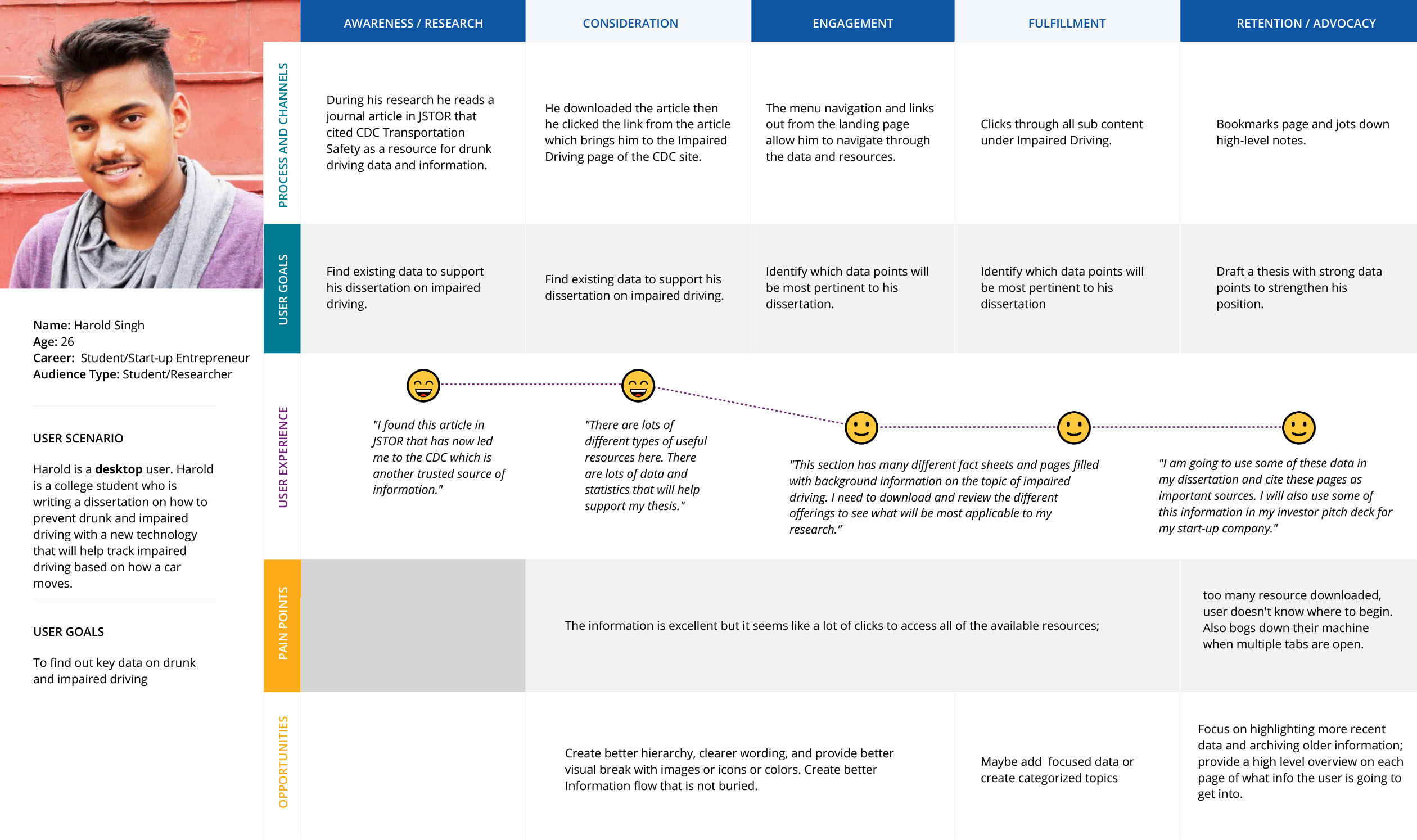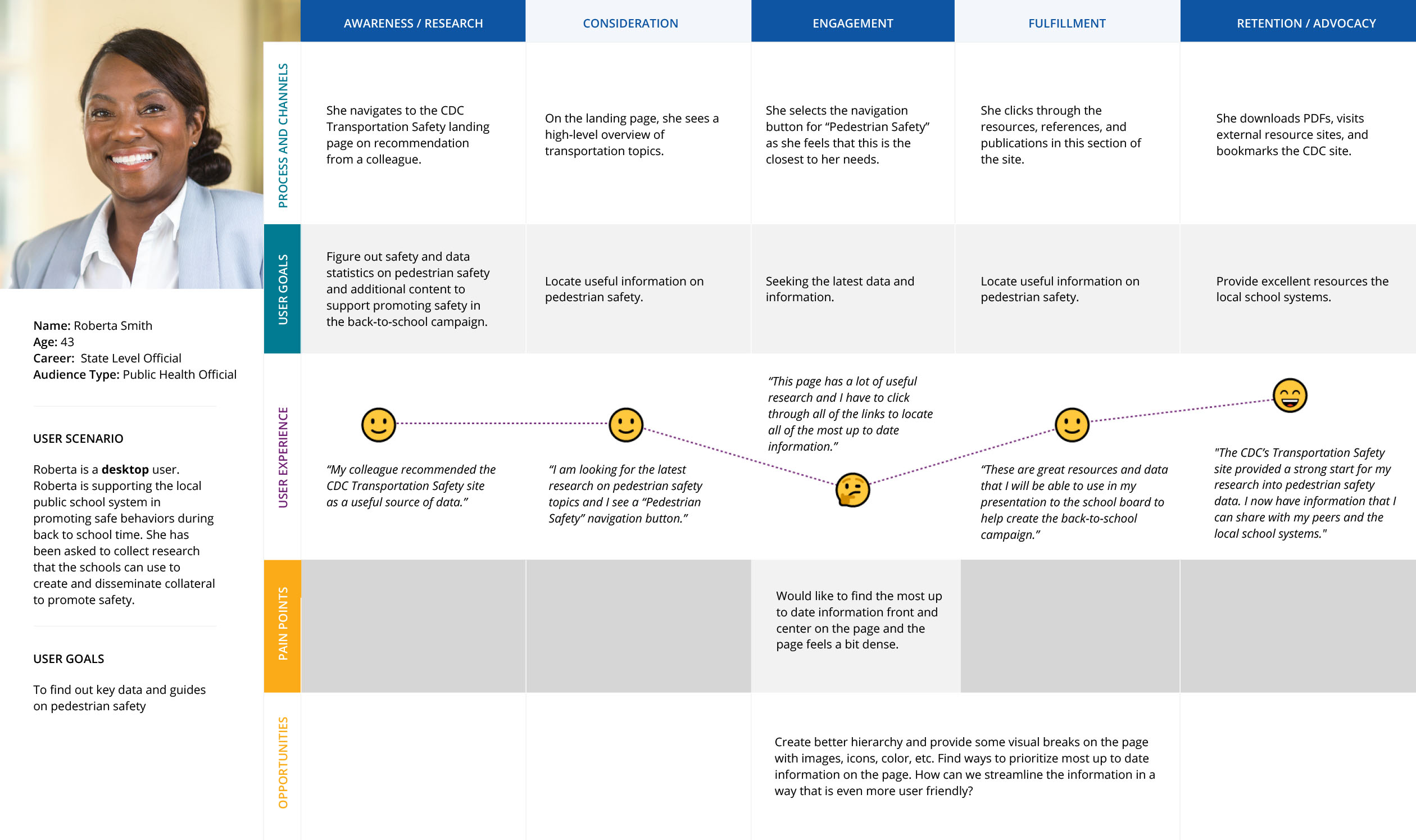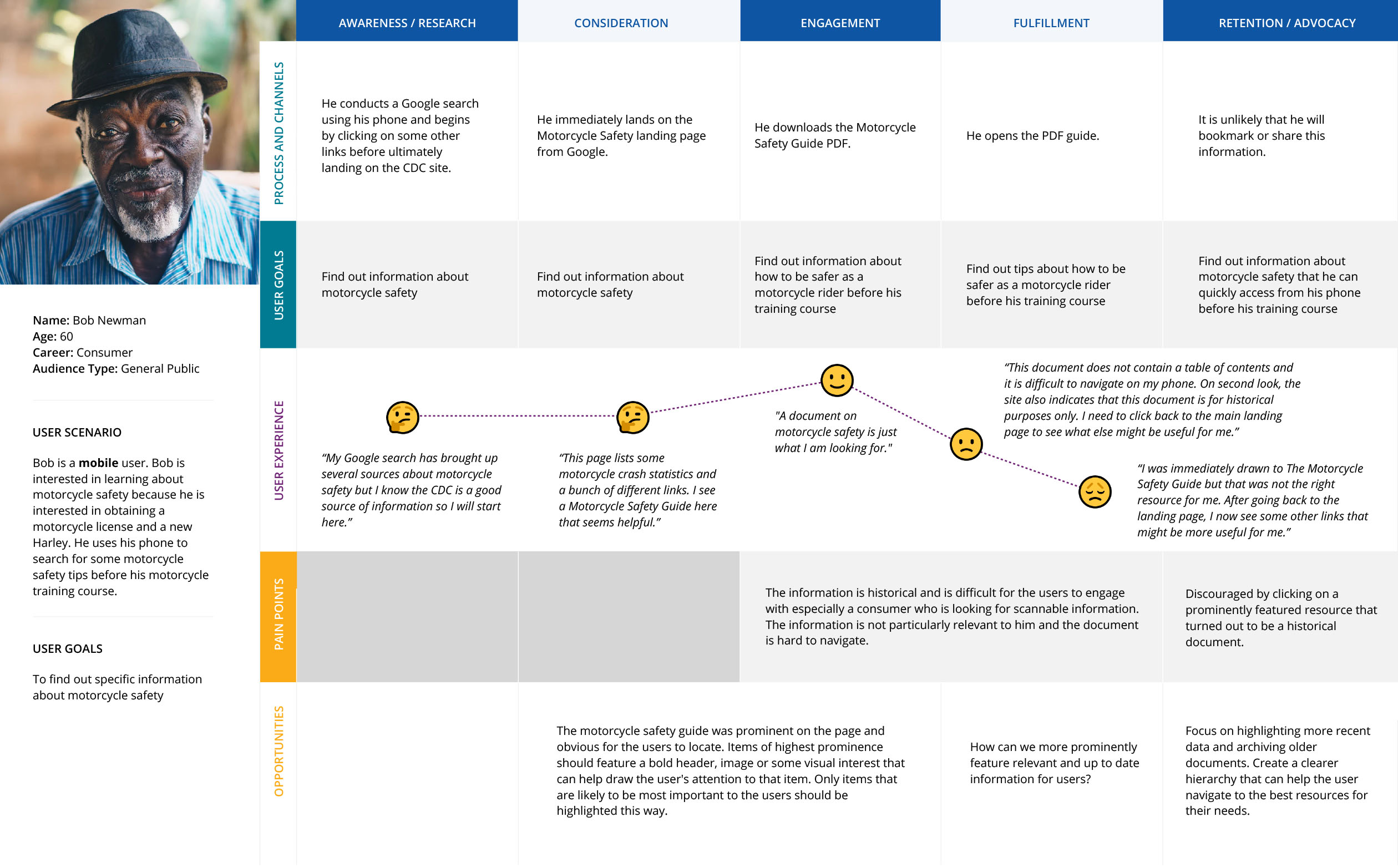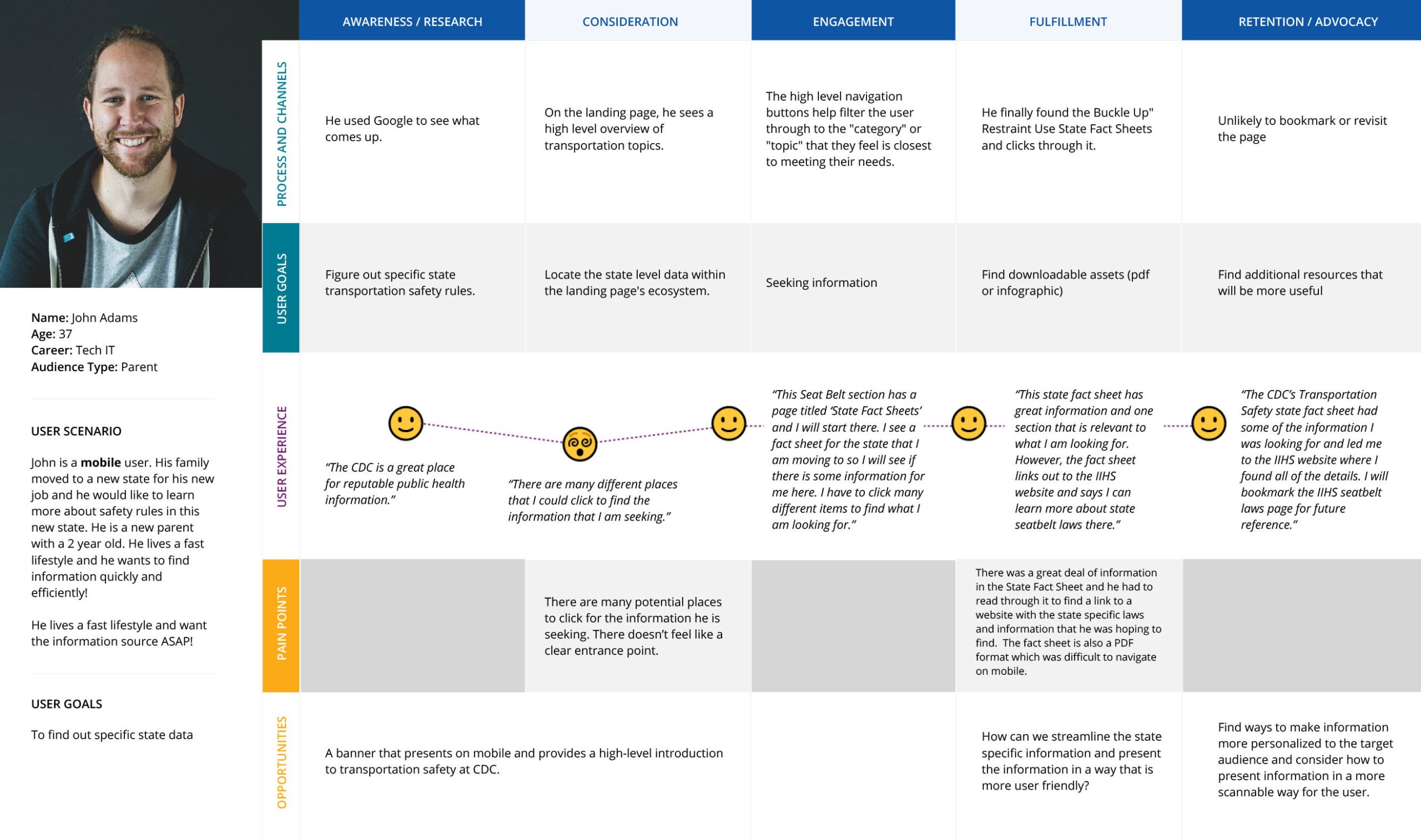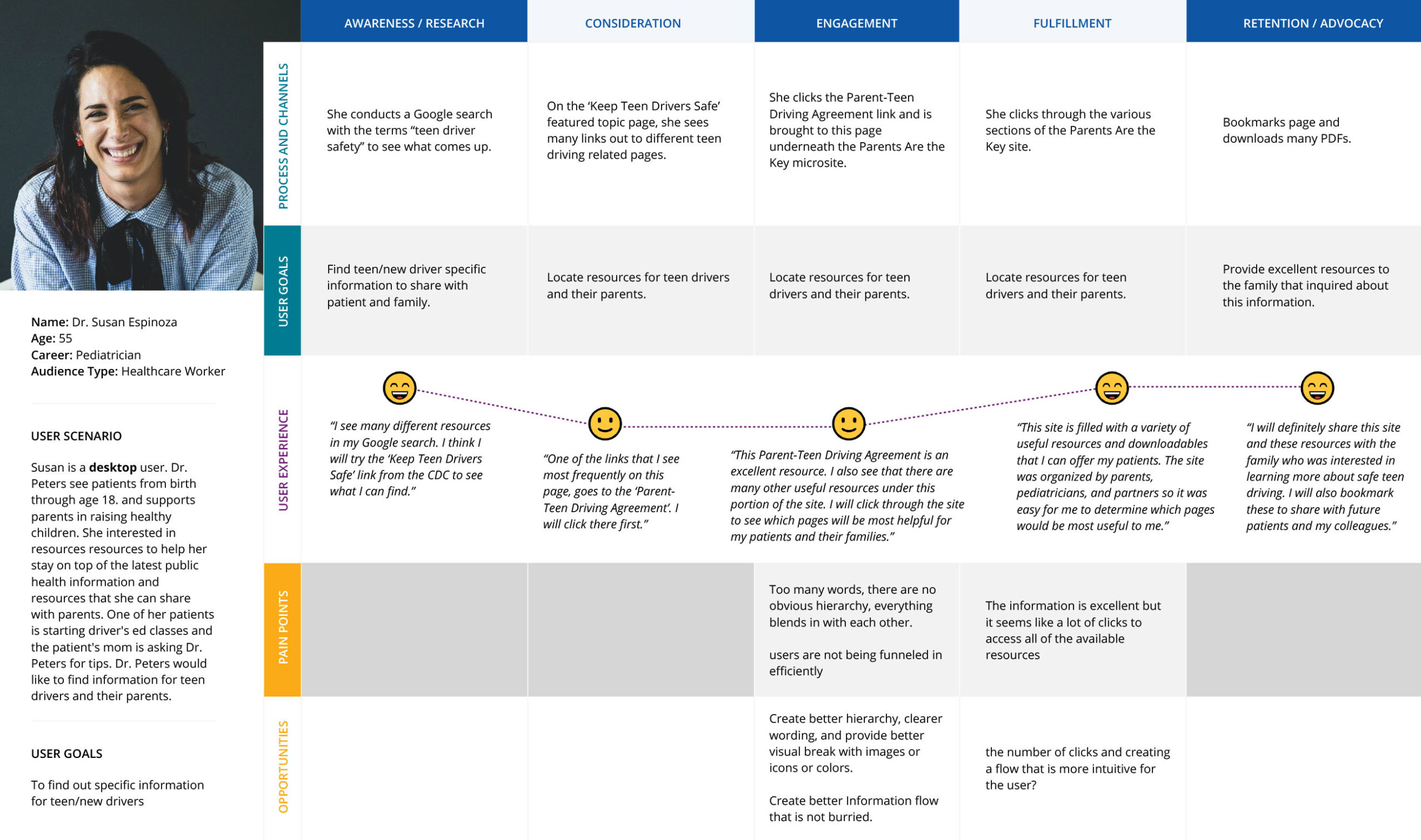
Enhancing UX through Storytelling
Storytelling has been an intrinsic communication tool used throughout human existence, from the creation of ancient cave paintings to catching up with friends and co-workers. We spend our lives touched by different stories. These collective stories create a big impact on who we are. So what does storytelling have to do with User Experience (UX) design?
There are many reasons to incorporate stories when designing a product’s experience, but one main reason is most of the stories are relatable to a specific target audience to some degree.
For example, I recently worked on a project for the Centers for Disease Control and Prevention (CDC) Transportation Division. One of the division’s many challenges is to go digital-first with their current content and amplify user engagement. To understand current content relevance and their audience needs, the Hatcher UX team designed a set of personas that would be the main actors in the stories that we mapped out.
This provided us with a holistic understanding of the content architecture landscape and insight to create the best possible experience for the user. Not only do stories provide information, but they’re also a vehicle for emotions. By leveraging storytelling, we can make the UX even more engaging, compelling, and enjoyable as we develop a deeper understanding of the users.
The versatility allowed the team to weigh many different dimensions and aligned stakeholders from top to bottom. The stories we mapped out provided an emotional bond that helped capture attention and helped us hone in on the main goals and challenges. This help builds expectations, frame the problem, and build trust in the process. Storytelling as part of our UX methodology helped CDC get on the same page as their users. With the right combination of storytelling and UX, the team enabled CDC’s transportation division to move effectively while simultaneously providing monumental user impact and amplifying user retention and engagement.
There are many ways of structuring a story. One that has been proven successful is the three-act storytelling structure that has been adopted widely as a marketing principle based on Aristotle’s three-act story structure. In essence: the beginning, the middle, and the end of a story. This structure draws a parallel to a typical user journey or product life-cycle. It can be overlayed on top of a UX journey mapping session to create an authentic and simple understanding of the user’s goals and needs.
Every design element, from simple images to language framing, is all about the user’s story. The fundamentals of storytelling help create the optimal user experience extend beyond experience design. Stories provide a higher purpose and clarity of why we are doing what we’re doing and helps us maintain focus on the outcomes instead of getting too bogged down by specific solutions and tools. Ultimately, stories help target realistic project milestones to create the ultimate user experience.
